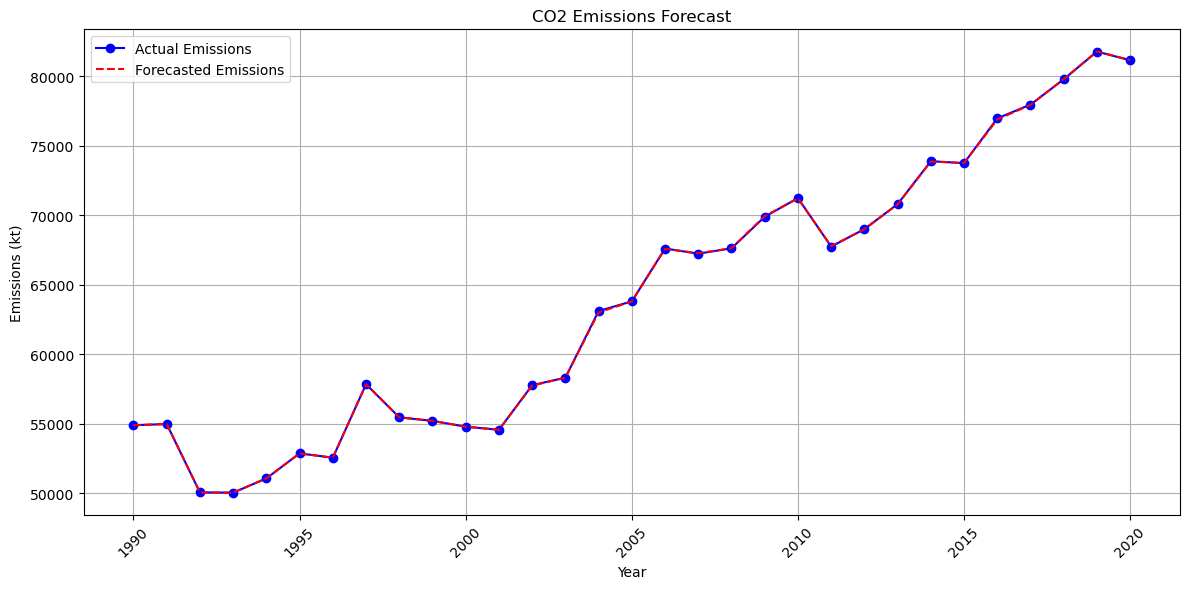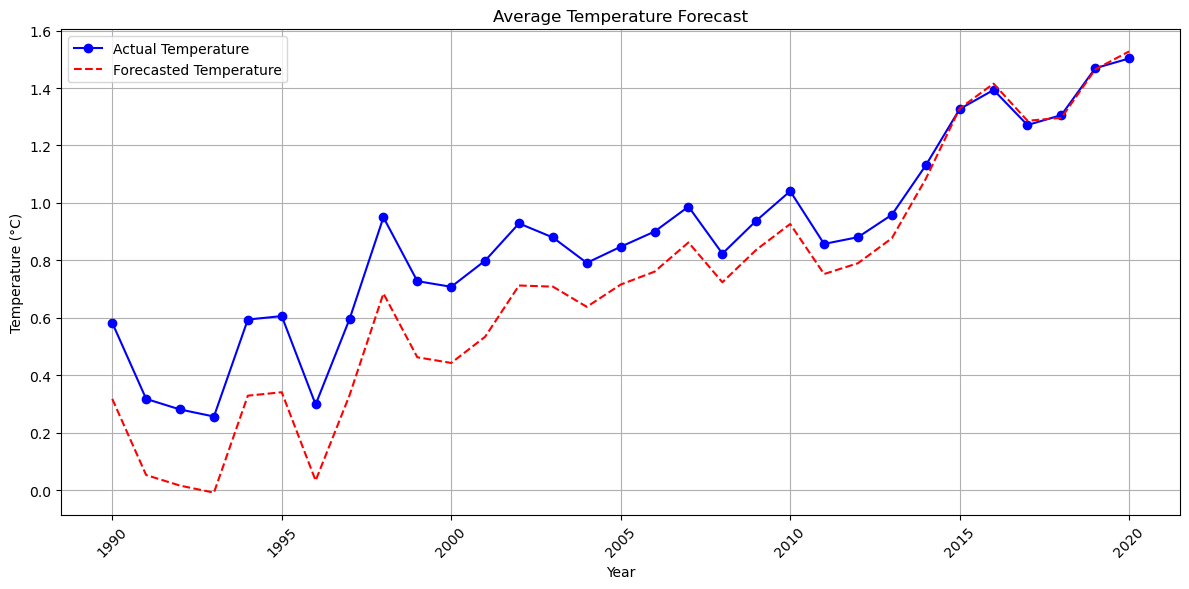Forecasting CO₂ Emissions
Insights into environmental trends using advanced forecasting techniques using Python.
Introduction
Climate change poses significant challenges globally, with the agri-food sector being a major contributor to CO₂ emissions. This project focuses on analyzing and forecasting emissions and temperature changes using advanced statistical models to provide actionable insights for policymakers and stakeholders.
Methodology
The project utilized Winter's Method (Triple Exponential Smoothing) in both its additive and multiplicative forms to forecast CO₂ emissions and temperature trends. The dataset was sourced from Kaggle, combining FAO and IPCC data, and underwent extensive preprocessing to ensure accuracy.
- Data cleaning and preprocessing
- Application of additive and multiplicative models for different datasets
- Validation using metrics like MAE and MSE
Findings
The analysis revealed a concerning upward trend in CO₂ emissions and global temperatures. Key accuracy metrics include:
- Mean Absolute Error (MAE) for emissions: 16.57 kt
- Mean Squared Error (MSE) for emissions: 816.90 kt²


Interactive Dashboard Insights
An interactive Tableau dashboard was developed to visualize CO₂ emissions and temperature trends. The dashboard enables users to explore data interactively and assess the impacts of current practices.
.png)
Conclusion
This project analyzes CO2 emissions and temperature fluctuations in agriculture, a sector responsible for 62% of global emissions. Using additive and multiplicative Winter’s Methods, it forecasts future trends, capturing seasonal and long-term patterns with high accuracy, as reflected by low MAE and MSE values. The findings highlight the urgent need for sustainable agricultural practices. By anticipating future impacts, this study offers a quantitative basis for policy-making and environmental strategies to mitigate climate change risks and protect ecosystems and global food security.
